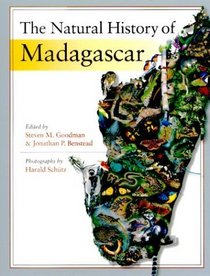Search -
The Natural History of Madagascar
The Natural History of Madagascar
Separated from the mainland of Africa for 160 million years, Madagascar has evolved an incredible wealth of biodiversity, with thousands of species that can be found nowhere else on earth. For instance, of its estimated 12,000 plant species, nearly 10,000 are unique to Madagascar. Malagasy animals are just as spectacular, from its almost forty c... more »
Separated from the mainland of Africa for 160 million years, Madagascar has evolved an incredible wealth of biodiversity, with thousands of species that can be found nowhere else on earth. For instance, of its estimated 12,000 plant species, nearly 10,000 are unique to Madagascar. Malagasy animals are just as spectacular, from its almost forty c... more »
ISBN-13: 9780226303062
ISBN-10: 0226303063
Publication Date: 1/1/2004
Pages: 1,728
Rating: ?
ISBN-10: 0226303063
Publication Date: 1/1/2004
Pages: 1,728
Rating: ?
0 stars, based on 0 rating
Publisher: University Of Chicago Press
Book Type: Hardcover
Members Wishing: 0
Reviews: Amazon | Write a Review
Book Type: Hardcover
Members Wishing: 0
Reviews: Amazon | Write a Review
Genres:
- History >> Africa >> Madagascar
- Science & Math >> Biological Sciences >> Ecology
- Science & Math >> General
- Science & Math >> Mathematics >> History
- Engineering & Transportation >> Professional Science >> Biological Sciences >> Ecology




